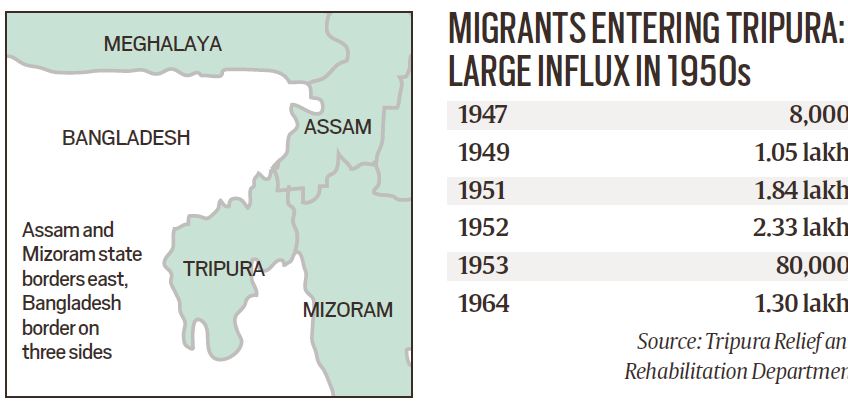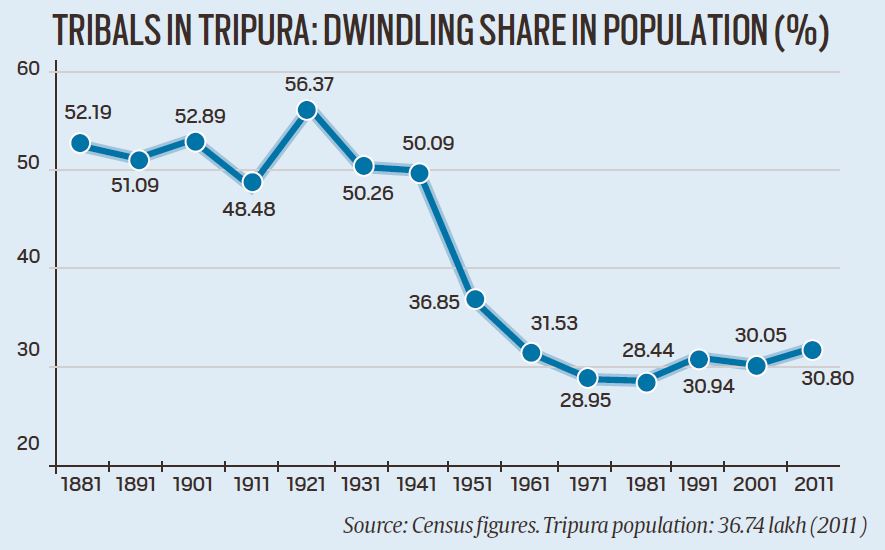7667766266
enquiry@shankarias.in
Why in news?
Demand for National Register of Citizens for Tripura, on the lines of the NRC in Assam, has been rising in recent times.
Who are Tripura’s indigenous people?

What is the extent of migration by non-tribal groups?

How many Bengalis live in Tripura now?
Has migration not been an issue earlier?
What should be done?
Source: The Indian Express